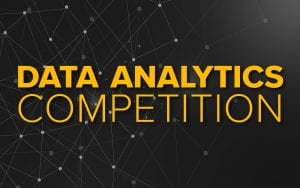What is business analytics? Business analytics has been around for many years but has grown as a field in the past ten years because of big data. Stella Tomasi, a professor in the Department of Business Analytics and Technology Management, began her career as a chemist in pharmaceuticals before transitioning to technology.
“I was curious about how things worked in pharmaceuticals and in three years I was able to learn a lot. At that point, I got a job offer at the FDA while being accepted into a master’s program in management information systems,” Tomasi says. “I chose the master’s program and switched my career into how businesses used technology to achieve their goals.”
While working as a database administrator and building databases for clinical trials, she worked with statisticians to analyze collected data to identify the effectiveness of new drugs.
“This was my first introduction to data analytics,” Tomasi explains.

Afterward, as a consultant at Accenture until 2009, she worked with various pharmaceutical companies on process improvement, new system implementation, and analyzing success measures, all of which helped her bring real world experience into the classroom. She continues to talk to industry partners to incorporate new technology such as UiPath, which helps businesses with robotic process automation.
During her time in the College of Business & Economics, Tomasi developed the business systems and process major, the business analytics minor, and the data analytics competition.
“We have lots of data that is being collected in any industry. Regardless of what discipline you are in, collected data can be analyzed to help identify patterns, trends and ultimately make intelligent decisions for decision makers,” Tomasi says.
Interested in learning more? We encourage all students to learn more about the Business Analytics Minor.
Tomasi is also a big advocate for careers in the STEM fields, since she herself switched from chemistry to technology. The business systems and processes major provides students with hands-on experience with an Enterprise Resource Planning system called SAP. Students learn how SAP is utilized in industry through various processes such as sales, distribution, production, marketing, human resources, and accounting. Regardless of your functional area, most large companies use SAP in their daily operations.
Additionally, Tomasi advocates for women and minorities to participate in STEM through an organization called Girls in Technology (GIT), where she is a program director that helps connect girls with learning experiences. GIT works with young girls from grades 6-12 from various schools in the DMV area to promote STEM careers.
This year, there is a focus on data analytics. The field of analytics is growing and jobs are expected to continue to grow. The U.S. Bureau of Labor Statistics predicts the number of jobs in the field will increase by 28% by 2026, which means roughly 11.5 million new jobs.
 One of the reasons Tomasi developed the data analytics competition was for students to see what it is like to analyze data — but in an informal environment while helping companies with intelligent decision making. Tomasi believes that it is important to look at a practical application of data analytics that will help students understand how data analytics is helpful in any industry.
One of the reasons Tomasi developed the data analytics competition was for students to see what it is like to analyze data — but in an informal environment while helping companies with intelligent decision making. Tomasi believes that it is important to look at a practical application of data analytics that will help students understand how data analytics is helpful in any industry.
Not only does the competition give students a fun way to experience analytics, but it allows participating companies to recruit students in an informal way as they are able to see how students analyze and communicate the insights. The participating students sometimes do not realize how this opportunity could potentially lead to an internship or future career.
Stella Tomasi has contributed immensely to the College of Business and Economics, and her unique career path makes her invaluable to Towson University.
Learn more about the Data Analytics Competition
Learn more about the Business Analytics Minor
Learn more about the Business Systems and Process Major
Written by: Millie Klefsaas

